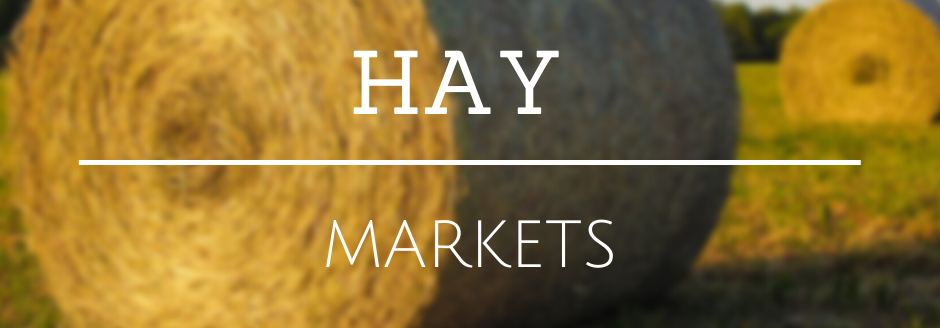Colorado—In the Sept. 7 report, compared to last report, trade activity and demand has softened. Hay trades are slow as third cutting is well underway across the state. Areas that have received a lot of rain since mid-May have created challenges in putting up hay that will test. Later cut alfalfa with low test is going to be moving into the grinder markets. Producers have struggled to put up hay without any rain on it. According to Colorado Crop Progress report, alfalfa hay third cutting is 55% complete.
Missouri—In the Sept. 7 report, compared to last report, hay prices are steady. The overall supply of hay is light to moderate and demand is moderate. A hint of fall was in the air this week as nights are starting to become cool and grain harvest is just starting for a few folks. Although no one wants to see it turn wet and become muddy a bit of moisture for pasture growth would be welcome as most areas have not seen any measurable moisture for a few weeks now. There is still some fall haying occurring around the state.
Nebraska—In the Sept. 7 report, compared to last report, all reported hay sold steady. Demand was light in most areas, except good demand was noted in eastern parts of the state. Silage chopping and baling cane or millet hay is in full swing. Several talks of high moisture corn harvest starting in the next couple of weeks. Hot and dry weather across most of the state the last seven days burning up grass pastures and dry land crops. Some producers have been baling drought soybeans for hay instead of combining it.
Oklahoma—In the Sept. 1 report, compared to the last report, hay is slow to steady. Not much movement across Oklahoma. The state needs some rain as drought continues to spread and to allow our hay producers to get one cutting in before fall. Next report will be released Sept. 15.
Texas—In the Sept. 8 report, compared to the last report, hay prices are mostly steady across the majority of the regions, with the exception of the south were prices were still firm on very good buyer demand. Trading activity was moderate to active on good buyer demand. In addition to increased drought conditions, deteriorating pastures and rangelands are stressing livestock. As of early September, 72% of Texas rangelands were in poor or very poor condition. Next report will be released Sept. 15.
South Dakota—In the Sept. 8 report, compared to last report, alfalfa hay steady to weak. Moderate demand for alfalfa currently as producers are showing resistance to asking prices. CRP haying has put some pressure on the overall hay market, yet supplies of high testing alfalfa is limited this year as the drought and heat curtailed growth. Very hot weather over the weekend as temps were on either side of 100 degrees, gave way to more seasonal weather by midweek. Corn silage harvest is finishing up, soybeans starting to turn, and corn continues to dry down rather quickly.
New Mexico—In the Sept. 8 report, compared to last report, alfalfa hay steady. Trade active, demand good. Alfalfa hay is at 84% finished with third cutting, most producers 34% complete with fourth cutting and starting fifth cutting, The northern part of the state is in the third cutting. Some parts of the state have received scattered showers. Hay and roughage supplies were reported as 25% very short, 37% short, and 38% adequate. Stock water supplies were reported as 23% very short, 35% short, 40% adequate, and 2% surplus.
Wyoming—In the Sept. 7 report, compared to last report, all reported hay sales sold steady. Demand was light to moderate. Most producers in the east are on third cutting of hay. In the central and west producers are on second cutting of alfalfa. There might be a few producers in the central and west that will get a few acres of third cutting put up but Mother Nature will have the final decision. Next report will be released Sept. 21.
Montana—In the Sept. 8 report, compared to last report, hay prices traded generally steady. Demand for hay remains light for local hay and mostly moderate for hay to ship out of the state. Most of the hay in squares was purchased by out of state buyers again this week. Several Canadian buyers purchased hay to ship north this week. Most of these buyers were purchasing hay in the northern half of the state due to freight costs, but have showed interest in buying hay in central Montana if prices are agreeable. Canadian buyers have mostly been interested in higher quality hay, but are willing to take poorer quality blending hay, at the right price level. Market activity continues to improve as more participation and sales seem to occur each week. Producers continue to keep asking prices $180-$200 a ton for green clean hay in squares and sales are occurring in that price range. Hay in rounds remains a large discount to hay in squares as heavy supplies continue to be seen. Late season rains have made it difficult to finish putting up hay for the season. Some central Montana hay producers are still trying to wrap up second cutting with some trying to start on third however a pattern of daily showers is making that task difficult. Demand for straw is moderate. No new sales were seen this week, however asking prices remain around $60 to $65 per ton.

